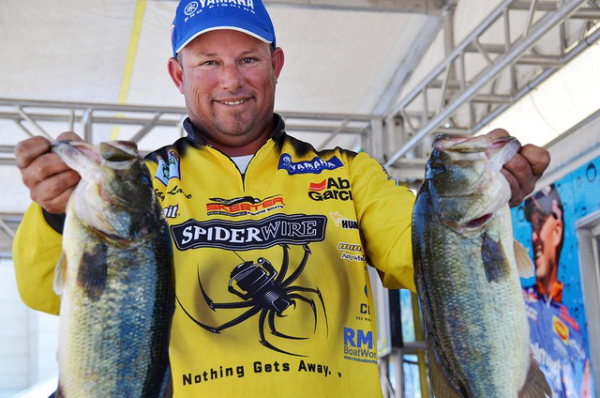
Which is harder to catch, five jumbo largemouth/smallmouth bass, or 50 two-pounders of either species?
Depends . . .
But a number of pro anglers have decided that they like the competition of looking for those five jumbo’s, per the original Ray Scott/B.A.S.S. formula, better than they do the admittedly-exciting MLF Bass Fishing League (BLF) format we’ve seen on TV the last several years, where anglers sometimes catch dozens of two pounders to win big money.
And MLF has just announced they will be changing to the five biggest fish format next year for their BFL format.
It may or may not be a coincidence that this just happened after MLF star Bobby Lane, who won last year’s Redcrest Championship in the MLF BFL—the equivalent of the Bassmaster Classic on that circuit-- decided he wanted to go back to fishing the Bassmaster Elites, where they have always stuck to the five big un’s format.
This had to rankle a bit for MLF to lose one of their stars, but of course it rankled a lot when nearly all the well-known pro bassers jumped ship in 2011 to move to MLF from Bassmaster, where they had all made their reputations.
Hey, it’s just business, as they say.
MLF already uses the five-fish format in their Toyota series and other circuits, but had not used it in the made-for-TV BLF events featuring the top names in fishing since inception.
Also different in MLF competition, there’s no weigh-in, so no cheering crowd as the winner is crowned—the fish are weighed with an observer on the boat, then immediately released. The winners are assuredly made happy with a really fat check, but some also miss the rock star status of appearing on stage to hold up their winning fish.
Of course, the conservation aspect of the BLF catch-weigh-release tournaments is obvious—not only are the fish immediately put back rather than being dragged around in a live well for hours, but they’re also put back in the same location where they’re caught. Survival is likely very close to 100 percent.
Some anglers have found the most-two-pounders format particularly challenging since forward-scanning sonar has taken over most tournaments where the fish are found in open water. Young Texas angler Kyle Hall just banked $235,000 last
weekend at Lake Guntersville in the MLF Toyota Series Championship, relying almost entirely on a Garmin LiveScope and an Alabama rig for his giant win. Video game fishing is becoming the norm, and some of the “kids” of the tournament world are very, very good at it.
Lane is among a number of big names that initially made the jump to MLF when it started in 2011, and now have either come back to Bassmaster or at least stated the intention to do so. Lane will have to qualify next year through the Bassmaster Opens series for a chance to get into the Classic, no easy matter given the quality of competition in these events now. But given Lane’s history of intuitively finding big fish for so many years, you have to guesstimate it won’t be long before he’s vying for a Classic win once again.
The approach to finding lots of small fish versus fewer but larger big ones varies a lot, because large bass and small bass don’t often inhabit the same terrain. Not surprisingly, they usually hang out where ever there’s plenty of food that’s the right size for them to eat. A two-pounder is happy with a 3-inch shad or herring, but a five-pounder likely wants a six-incher or larger—or maybe a nice fat bluegill or frog.
Knowing where to find the big ones has always been more intuition than science, or at least it was until forward-scanning. And Bobby Lane has always been very good at that sort of intuition.
It will be interesting to see how this all shakes down, and what it will mean for all of us weekend anglers.
But if you’re like me, you’d probably be happy with either a mess of two pounders or a few five pounders in a day on the water. But of course we’re not fishing for six-figure checks like the top pros.